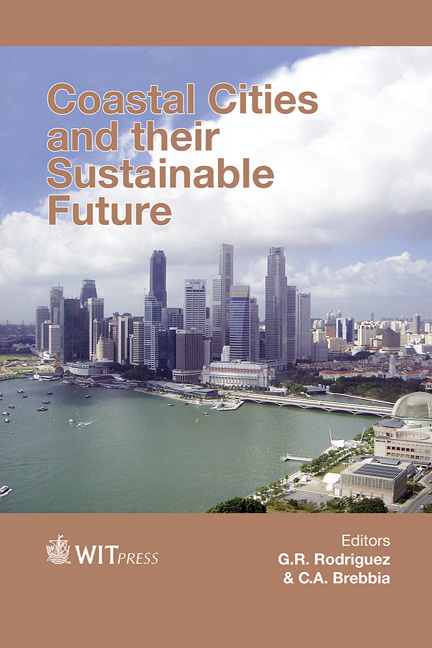Contravariant Boussinesq Equations For The Simulation Of Wave Transformation, Breaking And Run-up
Price
Free (open access)
Transaction
Volume
148
Pages
12
Page Range
319 - 330
Published
2015
Size
1,191 kb
Paper DOI
10.2495/CC150271
Copyright
WIT Press
Author(s)
F. Gallerano, G. Cannata, O. De Gaudenzi, S. Scarpone
Abstract
We propose an integral form of the fully non-linear Boussinesq equations in contravariant formulation, in which Christoffel symbols are avoided, in order to simulate wave transformation phenomena, wave breaking and near shore currents in computational domains representing the complex morphology of real coastal regions. The motion equations retain the term related to the approximation to the second order of the vertical vorticity. A new Upwind Weighted Essentially Non-Oscillatory scheme for the solution of the fully non-linear Boussinesq equations on generalised curvilinear coordinate systems is proposed. The equations are rearranged in order to solve them by a high resolution hybrid finite volume–finite difference scheme. The conservative part of the above-mentioned equations, consisting of the convective terms and the terms related to the free surface elevation, is discretised by a high-order shock-capturing finite volume scheme; dispersive terms and the term related to the approximation to the second order of the vertical vorticity are discretised by a cell-centred finite difference scheme. The shock-capturing method makes it possible to intrinsically model the wave breaking, therefore no additional terms are needed to take into account the breaking related energy dissipation in the surf zone. The model is applied on a real case regarding the simulation of wave fields and nearshore currents in the coastal region opposite Pescara harbour (Italy).
Keywords
contravariant formulation, Boussinesq equations, breaking waves, run-up, shock-capturing methods





